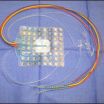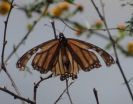(Press-News.org) In the weeks, months and years after a severe head injury, patients often experience epileptic seizures that are difficult to control. A new study in rats suggests that gently cooling the brain after injury may prevent these seizures.
"Traumatic head injury is the leading cause of acquired epilepsy in young adults, and in many cases the seizures can't be controlled with medication," says senior author Matthew Smyth, MD, associate professor of neurological surgery and of pediatrics at Washington University School of Medicine in St. Louis. "If we can confirm cooling's effectiveness in human trials, this approach may give us a safe and relatively simple way to prevent epilepsy in these patients."
The researchers reported their findings in Annals of Neurology.
Cooling the brain to protect it from injury is not a new concept. Cooling slows down the metabolic activity of nerve cells, and scientists think this may make it easier for brain cells to survive the stresses of an injury.
Doctors currently cool infants whose brains may have had inadequate access to blood or oxygen during birth. They also cool some heart attack patients to reduce peripheral brain damage when the heart stops beating.
Smyth has been exploring the possibility of using cooling to prevent seizures or reduce their severity.
"Warmer brain cells seem to be more electrically active, and that may increase the likelihood of abnormal electrical discharges that can coalesce to form a seizure," Smyth says. "Cooling should have the opposite effect."
Smyth and colleagues at the University of Washington and the University of Minnesota test potential therapies in a rat model of brain injury. These rats develop chronic seizures weeks after the injury.
Researchers devised a headset that cools the rat brain. They were originally testing its ability to stop seizures when they noticed that cooling seemed to be not only stopping but also preventing seizures.
Scientists redesigned the study to focus on prevention. Under the new protocols, they put headsets on some of the rats that cooled their brains by less than 4 degrees Fahrenheit. Another group of rats wore headsets that did nothing. Scientists who were unaware of which rats they were observing monitored them for seizures during treatment and after the headsets were removed.
Rats that wore the inactive headset had progressively longer and more severe seizures weeks after the injury, but rats whose brains had been cooled only experienced a few very brief seizures as long as four months after injury.
Brain injury also tends to reduce cell activity at the site of the trauma, but the cooling headsets restored the normal activity levels of these cells.
The study is the first to reduce injury-related seizures without drugs, according to Smyth, who is director of the Pediatric Epilepsy Surgery program at St. Louis Children's Hospital.
"Our results show that the brain changes that cause this type of epilepsy happen in the days and weeks after injury, not at the moment of injury or when the symptoms of epilepsy begin," says Smyth. "If clinical trials confirm that cooling has similar effects in humans, it could change the way we treat patients with head injuries, and for the first time reduce the chance of developing epilepsy after brain injury."
Smyth and his colleagues have been testing cooling devices in humans in the operating room, and are planning a multi-institutional trial of an implanted focal brain cooling device to evaluate the efficacy of cooling on established seizures.
INFORMATION:
D'Ambrosio R, Eastman CL, Darvas F, Fender JS, Verley DR, Farin FM, Wilkerson H-W, Temkin NR, Miller JW, Ojemann J, Rothman SM, Smyth MD. Mild passive focal cooling prevents epileptic seizures after head injury in rats. Annals of Neurology, DOI: 10.1002/ana.23764.
This research was supported by the National Institutes of Health, the National Institute of Neurological Disorders and Stroke (NS053928, R.D.; NS042936, S.M.R.; EB007362, F.D.), CURE (5154001.01, R.D.; 5154001.05, M.D.S.); the U.S. Army Medical Research and Material Command; and the University of Washington.
Washington University School of Medicine's 2,100 employed and volunteer faculty physicians also are the medical staff of Barnes-Jewish and St. Louis Children's hospitals. The School of Medicine is one of the leading medical research, teaching and patient care institutions in the nation, currently ranked sixth in the nation by U.S. News & World Report. Through its affiliations with Barnes-Jewish and St. Louis Children's hospitals, the School of Medicine is linked to BJC HealthCare.
Cooling may prevent trauma-induced epilepsy
2013-02-21
ELSE PRESS RELEASES FROM THIS DATE:
The brainless origin of our head
2013-02-21
In many animals, the brain is located in a specific structure, the head, together with sensory organs and often together with the mouth. However, there are even more distantly related animals, which have a nervous system, but no brain, like sea anemones and corals.
In this collaborative study between a research group led by Fabian Rentzsch (Sars Centre Bergen) and Ulrich Technau from the Dept. of Molecular Evolution and Development the sea anemone Nematostella vectensis was used to find out if one of the ends of the sea anemone corresponds to the head of higher animals. ...
Aspirin and omega-3 fatty acids work together to fight inflammation
2013-02-21
Experts tout the health benefits of low-dose aspirin and omega-3 fatty acids found in foods like flax seeds and salmon, but the detailed mechanisms involved in their effects are not fully known. Now researchers reporting in the February 21 issue of the Cell Press journal Chemistry & Biology show that aspirin helps trigger the production of molecules called resolvins that are naturally made by the body from omega-3 fatty acids. These resolvins shut off, or "resolve," the inflammation that underlies destructive conditions such as inflammatory lung disease, heart disease, ...
Why living against the clock is a risky business
2013-02-21
Living against the clock—working late-night shifts or eating at inappropriate times, for example—can come with real health risks, metabolic syndrome, obesity, and diabetes among them. Now, researchers reporting in Current Biology, a Cell Press publication, on February 21 have new evidence to explain why it matters not just what mice (or by extension, people) eat, but also when they eat it.
Insulin action rises and falls according to a 24-hour, circadian rhythm, the researchers found. What's more, mice unable to keep the time for one reason or another get stuck in an insulin-resistant ...
For monarchs to fly north, first they've got to chill
2013-02-21
Monarch butterflies are well known for their ability to fly 2,000 miles south from North America to Mexico each fall and back again in the spring. Now, researchers reporting in Current Biology, a Cell Press publication, on February 21 have evidence to show that the butterflies would just keep on heading south if it weren't for the chilly weather.
The findings help to explain why the butterflies spend the winter on frosty mountaintops. They also imply that global climate change could profoundly influence the monarchs' migrations, the researchers say.
"The monarchs need ...
Biomarker may identify neuroblastomas with sensitivity to BET bromodomain inhibitors
2013-02-21
PHILADELPHIA — Neuroblastoma, the most common malignant tumor of early childhood, is frequently associated with the presence of MYCN amplification, a genetic biomarker associated with poor prognosis. Researchers have determined that tumors containing MYCN amplification are sensitive to a new class of drugs, BET bromodomain inhibitors.
The researchers made this discovery in a preclinical study, which was funded in part by a Stand Up To Cancer Innovative Research Grant and was published in Cancer Discovery, a journal of the American Association for Cancer Research.
"BET ...
Life's tiniest architects pinpointed by Yale researchers
2013-02-21
If a genome is the blueprint for life, then the chief architects are tiny slices of genetic material that orchestrate how we are assembled and function, Yale School of Medicine researchers report Feb. 21 in the journal Developmental Cell.
The study pinpoints the molecular regulators of epigenetics – the process by which unchanging genes along our DNA are switched on and off at precisely right time and place.
"Our genome is like a landscape with lakes, mountains, and rivers, but it is not yet a community or a city full of buildings," said Haifan Lin, director of the ...
Research shows that coldness triggers northward flight in migrating monarch butterflies
2013-02-21
WORCESTER, MA – Each fall millions of monarch butterflies from across the eastern United States begin a southward migration in order to escape the frigid temperatures of their northern boundaries, traveling up to 2,000 miles to an overwintering site in a specific grove of fir trees in central Mexico. Surprisingly, a new study by scientists at the University of Massachusetts Medical School published in Current Biology, suggests that exposure to coldness found in the microenvironment of the monarch's overwintering site triggers their return north every spring. Without this ...
New study indicates avocado consumption may be associated with better diet quality
2013-02-21
IRVINE, Calif. (February 20, 2013) – New analysis of data from the National Health and Nutrition Examination Survey (NHANES) , a program of the Centers for Disease Control and Prevention (CDC), indicates that consuming avocados may be associated with better diet quality and nutrient intake level, lower intake of added sugars, lower body weight, BMI and waist circumferences, higher "good cholesterol" levels and lower metabolic syndrome risk. These results were published in the January 2013 issue of Nutrition Journal.
Specifically, the survey data (NHANES 2001-2008, ...
Early human burials varied widely but most were simple
2013-02-21
DENVER (Feb. 21, 2013) – A new study from the University of Colorado Denver shows that the earliest human burial practices in Eurasia varied widely, with some graves lavish and ornate while the vast majority were fairly plain.
"We don't know why some of these burials were so ornate, but what's striking is that they postdate the arrival of modern humans in Eurasia by almost 10,000 years," said Julien Riel-Salvatore, Ph.D., assistant professor of anthropology at CU Denver and lead author of the study. "When they appear around 30,000 years ago some are lavish but many aren't ...
Circadian clock linked to obesity, diabetes and heart attacks
2013-02-21
Disruption in the body's circadian rhythm can lead not only to obesity, but can also increase the risk of diabetes and heart disease.
That is the conclusion of the first study to show definitively that insulin activity is controlled by the body's circadian biological clock. The study, which was published on Feb. 21 in the journal Current Biology, helps explain why not only what you eat, but when you eat, matters.
The research was conducted by a team of Vanderbilt scientists directed by Professor of Biological Sciences Carl Johnson and Professors of Molecular Physiology ...




